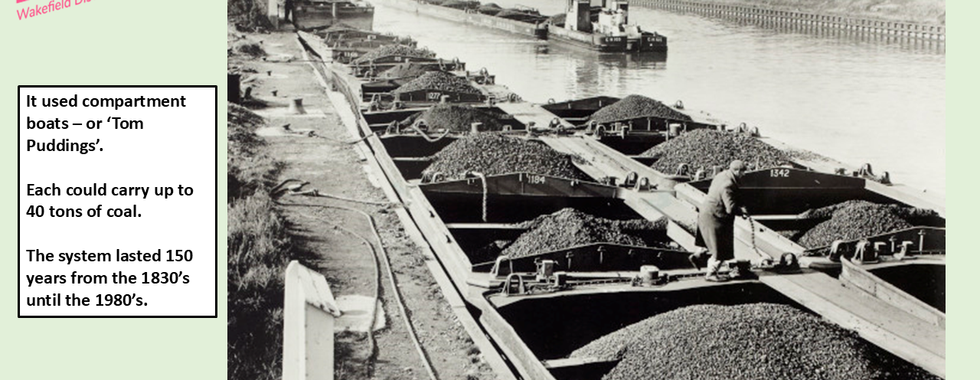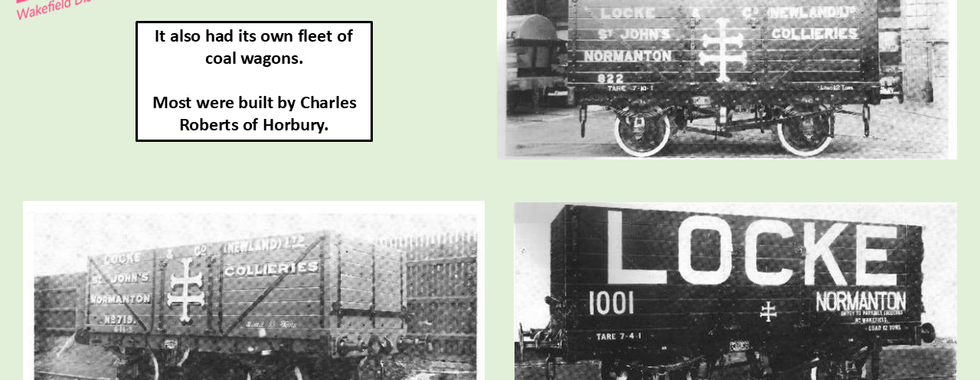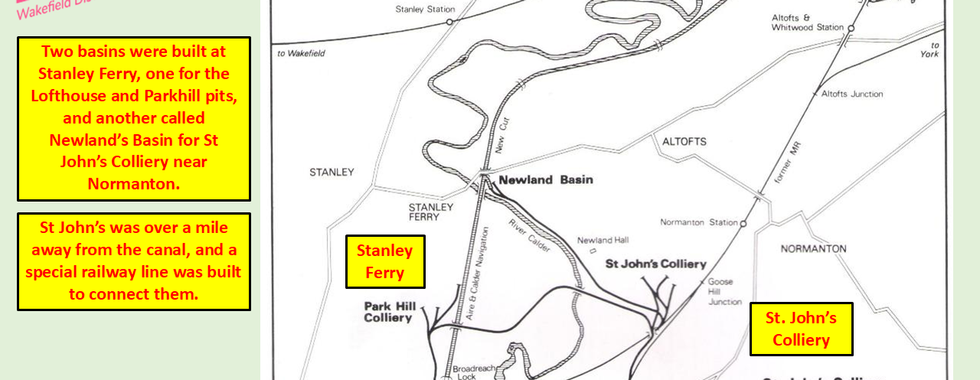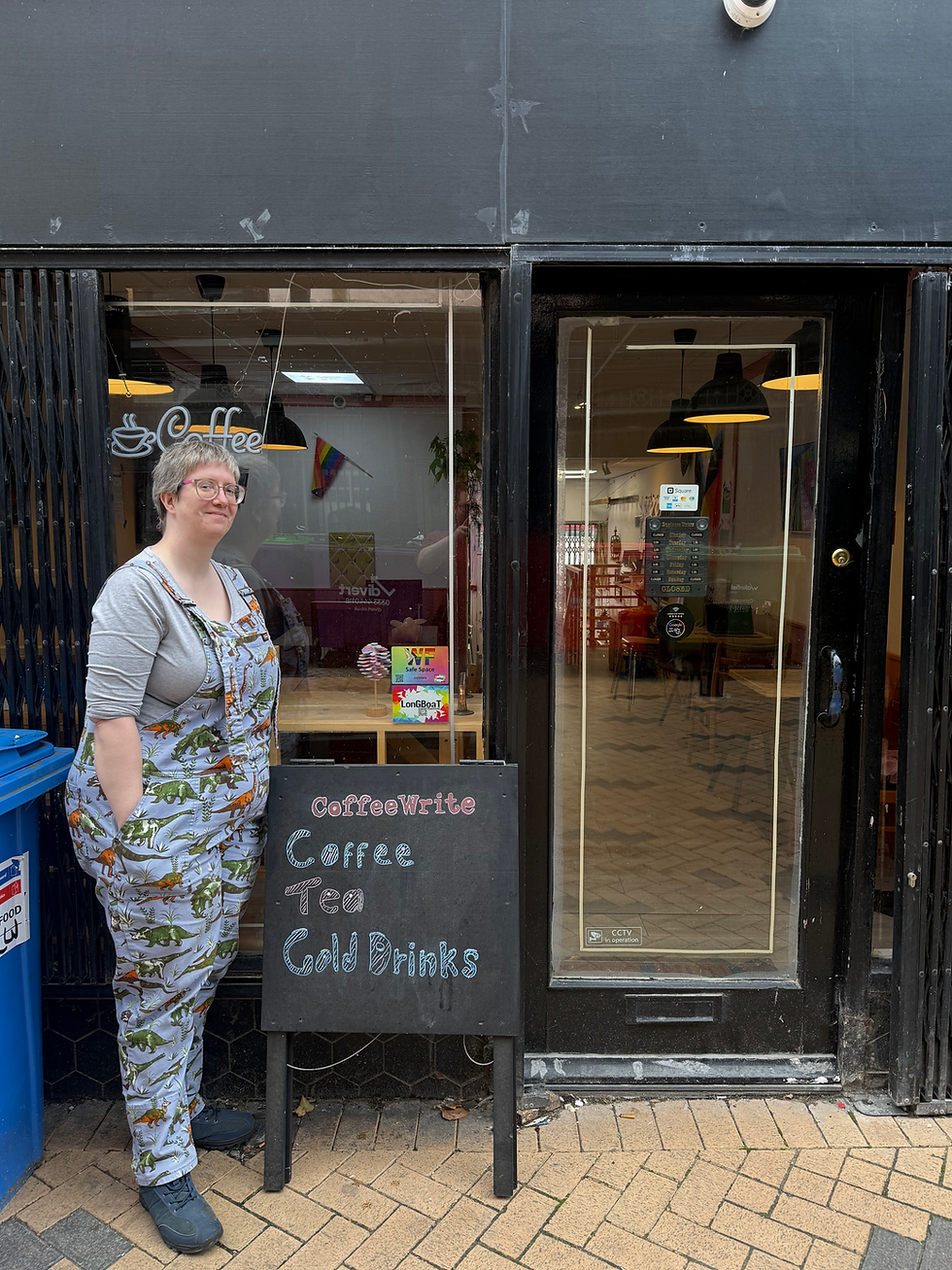Tom Puddings at Stanley Ferry – A New Display at the LonGBoaT Wakefield Community Gallery
- LonGBoaT Wakefield
- Sep 11
- 3 min read
Updated: Sep 24
We’re excited to share that the latest exhibition at our LonGBoaT Wakefield Community Gallery is now open; it’s a fascinating one. Thanks to the Wakefield Railway Modellers' Society (WRMS), visitors can step back in time and explore the story of the Tom Puddings at Stanley Ferry.
For those who don’t know, our community gallery is based right here at Wakefield Kirkgate Railway Station, in the waiting shelter on the island platform. It’s a space created to showcase local creativity, history and culture (with a special focus on amplifying voices that don’t always get heard in the mainstream)
What were the Tom Puddings?
Back in the 1830s, the Aire & Calder Navigation was built to link Yorkshire’s coalfields with the port of Goole. The challenge was simple: how to move thousands of tons of coal efficiently. The solution came from Wakefield’s own William Bartholomew, Chief Engineer of the Navigation, who invented the sectional boat system known as Tom Puddings.
Each Tom Pudding was a compartment boat capable of carrying up to 40 tons of coal. Up to 19 of them would be roped together in a “train” and hauled by a steam tug all the way to Goole. This ingenious system transformed coal transport and lasted an incredible 150 years, right up until the 1980s.

Stanley Ferry’s Unique Role
At Stanley Ferry, just outside Wakefield, the Navigation crossed the River Calder by aqueduct – one of the earliest of its kind in the world and still a remarkable piece of engineering. While constructing it in 1839, workers unearthed a wooden boat thought to date back to Viking times, which you can now see in Wakefield Museum.
Two loading basins were built here:
Lofthouse Basin – serving Parkhill and Lofthouse pits via a tramway nicknamed the Nagger Line.
Newland Basin – linked to St John’s Colliery near Normanton by a mile-long railway.
What made Stanley Ferry so unusual was that empty Tom Puddings were hauled by locomotive up to the colliery, loaded at the pithead, then rolled back to the basin and launched down a slipway into the water. This set-up shifted over 1,000 tons of coal a week between the 1890s and 1940s.
Although Newland Basin was filled in when the new aqueduct was built in 1981, the story of this industrial innovation lives on.

The WRMS Model
The Wakefield Railway Modelling Society have captured this history in a detailed model now on display in our gallery. It shows Newland Basin at its busiest in the late 1920s, complete with Tom Puddings, locomotives, wagons, and the pulley systems that powered the whole operation.
The display is still a work in progress and WRMS are keen to keep adding to it, making it as accurate and realistic as possible. They’re inviting anyone with memories, photos or information about Stanley Ferry, Newland Basin or the Tom Puddings to get in touch. You can learn more about their work at Wakefield Railway Modelling Society.

Why Here? Why Now?
Our Community Gallery is about stories, heritage, and identity. By hosting this display, we’re connecting Wakefield’s industrial past with its present-day communities. The story of the Tom Puddings is one of innovation, resilience, and local progress; qualities that resonate just as strongly today.
Next time you’re at Wakefield Kirkgate, pop over to the waiting shelter and take a look. You’ll discover a slice of Yorkshire history that powered the region for more than a century.
👉 Got a memory of Stanley Ferry or the Tom Puddings? We’d love to hear from you.


































































































Comments